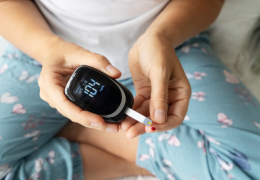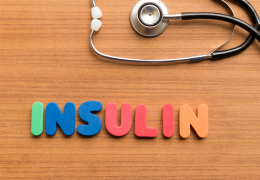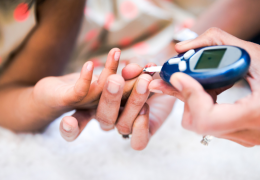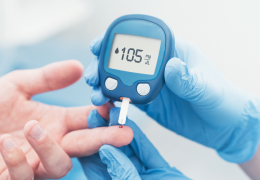Type 2 diabetes is a common form of diabetes in adults. If left uncontrolled, it can lead to serious complications affecting various parts of the body. So, what exactly is type 2 diabetes, and what are its symptoms? How can it be treated and prevented? Let’s explore these questions together in the following article by Lim!
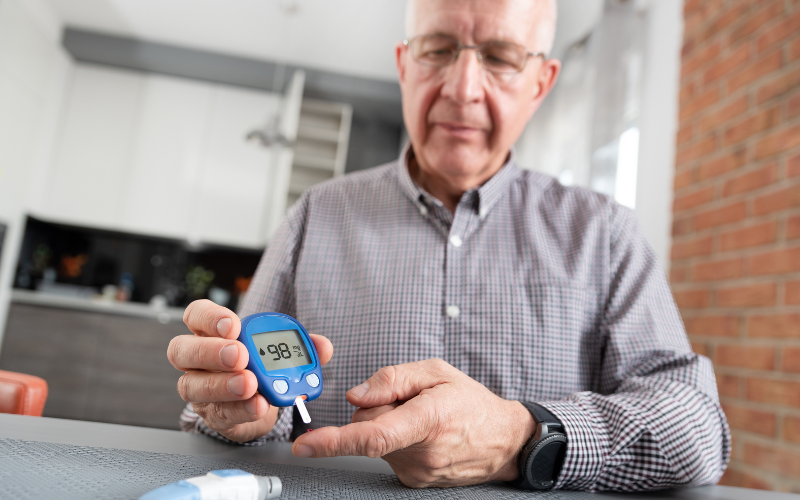
Explore the symptoms, causes, and prevention methods for managing Type 2 diabetes.
Understanding the Basics
What is Type 2 Diabetes?
Diabetes, or diabetes mellitus, occurs when blood sugar levels are too high. There are two main types of diabetes: Type 1 and Type 2 (previously referred to as adult-onset diabetes). In Type 2 diabetes, your body either doesn’t produce enough insulin or doesn’t use it effectively. Insulin is a hormone that helps glucose (sugar) enter your cells to provide energy. Without enough insulin, too much glucose builds up in your blood, leading to diabetes. Over time, high blood sugar levels can cause serious issues with your heart, eyes, kidneys, nerves, and blood vessels.
Symptoms
What are the signs and symptoms of type 2 diabetes?
The signs and symptoms of type 2 diabetes are often mild or not noticeable in the early stages, so you may not recognize them for years. Common symptoms can include:
- Blurred vision
- Fatigue
- Feeling hungry even after eating a lot
- Drinking more water but still feeling thirsty
- Frequent urination, especially at night
- Slow-healing wounds
- Pain or numbness in the legs or hands
- Unexplained weight loss
- Frequent infections
- Tingling or numbness in the hands or feet
- Darkened patches of skin, often in areas like the neck and armpits (known as acanthosis nigricans).
When Should You See a Doctor?
If you experience any of the signs and symptoms mentioned above, or if you have any questions or concerns, it’s a good idea to consult a doctor. Each person’s body and medical condition can vary greatly. Always discuss with your doctor to receive the most accurate diagnosis, treatment plan, and care tailored to your needs.
Causes
Causes of Type 2 Diabetes
Type 2 diabetes occurs when fat, liver, and muscle cells don’t respond properly to insulin. This condition, known as insulin resistance, prevents glucose from entering the cells to be stored as energy, leading to high blood sugar levels, or hyperglycemia. Additionally, the pancreas not producing enough insulin can also contribute to type 2 diabetes.
The common causes of insulin resistance include:
- Being overweight or obese: Excess fat and calorie intake can make it harder for your body to use insulin effectively.
- Genetics: Like type 1 diabetes, family history and genetics also play a role in the development of type 2 diabetes.
Who Is Prone to Type 2 Diabetes?
Type 2 diabetes is the most common form of diabetes, accounting for around 95% of all cases. It can affect people of any age, including children. However, it’s most prevalent among middle-aged and older adults. Additionally, individuals who are overweight or lead a sedentary lifestyle are at a higher risk of developing type 2 diabetes than others.
What Factors Increase the Risk of Type 2 Diabetes?
Several factors can increase the risk of developing type 2 diabetes, including:
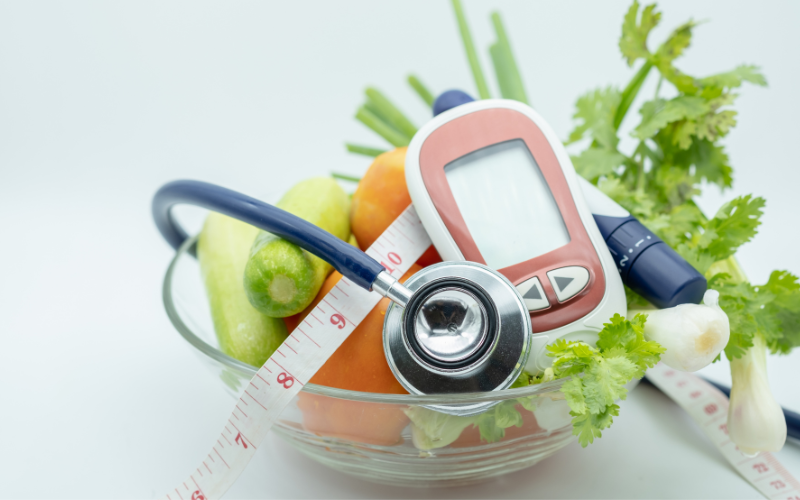
Learn about the factors that contribute to Type 2 diabetes and its potential complications.
- Weight: The more body fat you have, the more resistant your cells become to insulin.
- Lack of Physical Activity: Being less active increases your risk of type 2 diabetes. Physical activity helps you control your weight, use glucose as energy, and make your cells more sensitive to insulin.
- Family History: Your risk is higher if a parent or sibling has type 2 diabetes.
- Ethnicity: While the reasons are not fully understood, certain ethnic groups, including Black, Hispanic, Native American, and Asian-American people, are at higher risk.
- Age: The risk of type 2 diabetes increases as you age, especially after 45. This may be due to reduced physical activity, muscle loss, and weight gain. However, type 2 diabetes is also rising significantly among children, teenagers, and young adults.
- Gestational Diabetes: If you had diabetes during pregnancy, your risk of prediabetes and type 2 diabetes later in life increases. Giving birth to a baby weighing more than 4 kg also raises your risk.
- Polycystic Ovary Syndrome (PCOS): Women with PCOS — a condition characterized by irregular periods, excess hair growth, and obesity — have a higher risk of developing diabetes.
- High Blood Pressure: Blood pressure readings above 140/90 mmHg are associated with an increased risk of type 2 diabetes.
- Abnormal Cholesterol and Triglyceride Levels: Low levels of HDL (“good”) cholesterol and high levels of triglycerides — a type of fat found in the blood — are linked to a higher risk. Your doctor can help you understand your cholesterol and triglyceride levels.
These factors highlight the importance of a healthy lifestyle and regular medical check-ups to reduce your risk.
Complications
Is Type 2 Diabetes Dangerous?
Type 2 diabetes can affect many major organs, including the heart, blood vessels, nerves, eyes, and kidneys.
- Heart and Blood Vessel Diseases:
Diabetes is linked to an increased risk of heart disease, stroke, high blood pressure, and narrowing of blood vessels, a condition known as atherosclerosis. - Nerve Damage in Limbs:
This condition, called neuropathy, occurs when prolonged high blood sugar damages or destroys nerves. It can lead to tingling, numbness, burning, pain, or eventual loss of sensation, typically beginning in the toes or fingers and gradually spreading upward. - Other Nerve Damage:
Damage to nerves in the heart can contribute to irregular heartbeats. Nerve damage in the digestive system may cause nausea, vomiting, diarrhea, or constipation. Additionally, it can lead to erectile dysfunction. - Kidney Disease:
Type 2 diabetes can result in chronic kidney disease or irreversible end-stage kidney failure, potentially requiring dialysis or a kidney transplant. - Eye Damage:
Diabetes increases the risk of serious eye conditions such as cataracts and glaucoma. It can also damage the blood vessels in the retina, which may lead to blindness. - Skin Infections:
Type 2 diabetes can raise the likelihood of skin problems, including bacterial and fungal infections. - Tissue Necrosis:
Without proper treatment, cuts and blisters can develop into severe infections that are hard to heal. In extreme cases, this can lead to necrosis, requiring the amputation of toes, feet, or legs. - Hearing Loss:
Hearing problems are more common in people with diabetes. - Sleep Apnea:
Obstructive sleep apnea is prevalent among individuals with type 2 diabetes. Obesity is often a significant contributing factor to both conditions. - Memory Loss:
Type 2 diabetes appears to increase the risk of Alzheimer’s disease and other disorders that cause dementia. Poor blood sugar control is associated with a faster decline in memory and thinking skills.
Diagnosis and Treatment
The information provided here cannot replace advice from medical professionals. Always consult your doctor.
What medical techniques are used to diagnose type 2 diabetes?
Doctors can diagnose type 2 diabetes through the following blood tests:
- Fasting blood sugar test
- Glucose tolerance test
- Hemoglobin A1C test
- Random blood sugar test
If you’ve been diagnosed with diabetes, you may need to visit your doctor every 1–3 months so they can:
- Check your blood pressure
- Examine your feet
- Perform an eye check-up
- Conduct a Hemoglobin A1C test (every 3–6 months to determine how well your diabetes is being managed).
These evaluations will help you and your doctor monitor the progression of type 2 diabetes and prevent potential complications. Additionally, you should consider the following annual tests:
- Check your cholesterol and triglyceride levels every 6 months to 1 year
- Visit the dentist every 6 months to prevent oral complications
- Perform tests to ensure your kidneys are functioning well, such as microalbuminuria tests and urine albumin-to-creatinine ratio tests.
What Are the Methods to Treat Type 2 Diabetes?
Managing type 2 diabetes involves keeping your blood sugar levels under control. Many patients can effectively manage the condition through diet and exercise. Updated dietary guidelines now offer more food options, but it’s still essential to avoid foods high in sugar and unhealthy fats. Regular exercise helps control weight, maintain stable blood sugar levels, and improve your body’s ability to use insulin effectively.
However, for some patients, diet and exercise alone may not be enough, and medication becomes necessary. Medications for type 2 diabetes typically work by helping the body use glucose more efficiently. Commonly prescribed options include:
- Subcutaneous insulin injections
- Biguanides, such as metformin
- Sulfonylureas, like glimepiride and gliclazide
- Thiazolidinediones, such as rosiglitazone and pioglitazone
- Alpha-glucosidase inhibitors, like acarbose or miglitol
- DPP-4 inhibitors, such as linagliptin and vildagliptin
- Meglitinides, like nateglinide and repaglinide
- Sodium-glucose cotransporter (SGLT) 2 inhibitors, such as dapagliflozin, canagliflozin, and empagliflozin
Each treatment plan is tailored to individual needs, so consulting your healthcare provider is key to finding the most effective approach for you.
Prevention

Discover simple lifestyle changes that can help prevent Type 2 diabetes and promote overall health.
What measures can help prevent type 2 diabetes?
You can manage type 2 diabetes effectively with a few simple tips below:
- Keep your blood sugar levels close to normal
- Engage in regular physical activity and maintain a balanced diet
- Maintain a healthy weight
- Eat regular meals every day
- Follow a healthy eating plan: focus on whole grains, fruits, vegetables, and high-quality proteins. Avoid foods high in sugar, unhealthy fats, and white flour.
- Minimize alcohol consumption
- Get an eye checkup annually and a dental checkup every 6 months
- Quit smoking
- Take good care of your feet and schedule regular health checkups every 6 months to 1 year
- Visit the hospital immediately if you have a fever or are vomiting and unable to eat
- Seek medical attention if your blood sugar levels are abnormally high or low
- Don’t smoke
- Avoid consuming alcohol or sugary drinks
Share your experiences and get advice from others in similar situations! Join the Type 2 Diabetes community to learn and support each other on the journey to manage the condition.


